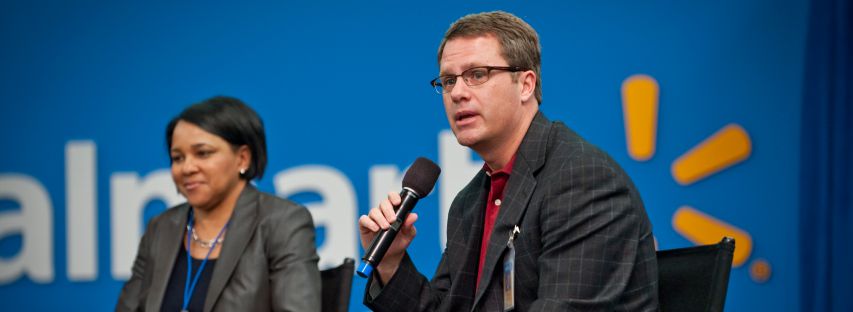The Idea: Do you truly understand Walmart’s strategy, as well as your own? The data says you may not. According to research by strategy& (formerly Booz) only 16% of top leaders are rated very effective at either strategy or execution, and only 8% were rated very effective at both. Odds are your Walmart business strategy may have some holes in it, and you may not even be aware of it.
Walmart recently announced that they are closing 269 stores worldwide including 154 of their underperforming U.S. outlets. Even though the revenue at stores they are closing equal less than one percent of their annual sales, these closings are symbolic of the decisiveness of CEO Doug McMillion.
McMillion recently announced to investors that their profits would drop by as much as 12% next year, as they will continue to transform their stores, raise wages and reduced inventory challenges. Their strategy is changing and they are looking to become more nimble and disciplined in their growth.
Walmart is not afraid of making big decisions. They are focusing on growing their Walmart Supercenter, Neighborhood Markets and their digital assets, including their eCommerce engine. Do you understand their strategy and, in turn, should they trust yours?
It will be critical to Walmart’s long-term health that they improve their shopping experience in their 4,600 U.S. stores. Today’s consumer demands great pricing, convenience, quality, and an enjoyable shopping experience. All of us must either delight the new consumer, or face the consequence – being ignored.
Walmart’s plan includes various efforts to scale back their inventory by eliminating items lacking differentiation and dropping underperforming products that take up too much space. They also will be reducing shelf clutter and expanding the width of aisles which will improve the consumer experience.
So what’s your strategy and how do you build trust with a retailer that speaks to 260 million customers in 28 countries?
- Diverse Value Offerings – The best, most productive brands offer a clearly defined Good-Better- Best product assortment, and provide options to the widest group of consumers. This includes people looking for both premium products, and the lowest everyday price. Since almost half of U.S. households earn less than $50,000 a year, offering attractive value is not a choice. If you want to maximize your brands, you must not ostracize large groups of consumers simply because of price point. Re-evaluate your value statements across all your product lines, and offer multiple price options.
- Truly Distinct – Tomorrow’s items must be truly differentiated. They must convey a compelling, contagious message, and scream “supreme value.” Does each of your items have a clear job description? Do you have items currently on the shelf that are too similar to your competitor’s right next to you? If so, you must redesign or run the risk of being eliminated.
- The Shelf Matters – Walmart is looking for the next generation of shelving experiences that improve the productivity of the category, and connects with both boomers and millennials. This includes offering ideas on how to brand the store with exclusive new products, innovative shelving fixtures, or category rationalization models that simplify the assortment in smaller format stores.
- Seamless Experience – Your brands digital experience must do more than inform the consumer; it must woo them into a relationship with your brand. Walmart is looking for partners that can help them build experiences that create covenantals relationship with their core consumer. Help Walmart deepen their digital relationships, and offer them next generation supply chain ideas. This combination will allow all retailers to help tell your brand story to their core shopper.
- Portfolio Management – The importance of portfolio management in regards to Walmart cannot be overstated. You simply must get more out of each store and think of your U.S. business like a deck of 4600 playing cards. Each card must be assessed, customized and optimized to effectively grow your overall base business. Are you investing enough time pondering each card in the deck? Are you thinking of their top 2000 stores as individual businesses?
Peter Drucker was stated, the greatest danger in times of turbulence is not the turbulence – it is to act with yesterday’s logic. The rate of change is not going to slow down anytime soon. Corporate agility is essential for today’s leaders.

